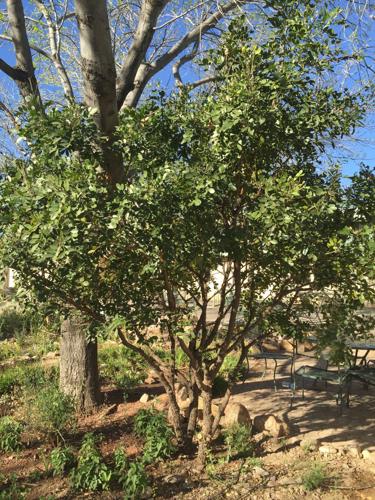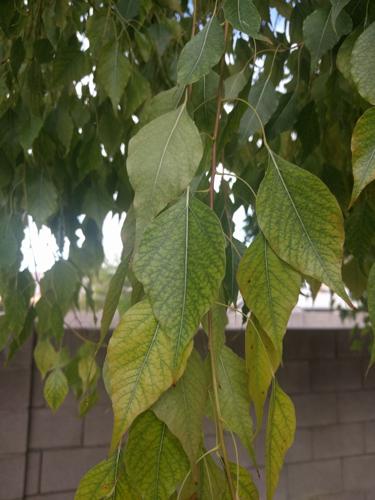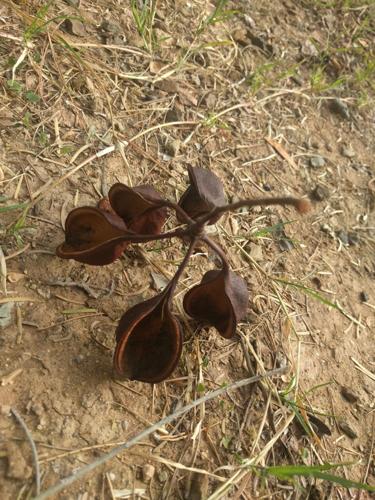Question: About four to five years ago, I planted an oak tree in my front yard. ... As yet, it has not grown, I don’t think, 1 inch. It does get leaves every year, but that’s it. What can I do to help it grow?
Answer: Trees transplanted to a new location typically take a couple years to adjust to their new surroundings. A big part of the adjustment is growing new roots, which are usually drastically pruned and damaged in the transplanting process. Since the below-ground root growth is not obvious to us above-ground animals, it appears that nothing is happening for quite a while. The rule of thumb is: The first year they sleep, the second year they creep, and the third year they leap. This growth pattern assumes the tree was planted in a suitable location and the care was appropriate. Care, once established, includes annual fertilization with a complete fertilizer and regular irrigation. For an oak tree that is not a native desert species that means watering to a depth of 24 to 36 inches every seven to 14 days in the summer, every 10 to 14 days in the spring and fall, and every 14 to 21 days in the winter. The emitters for your drip irrigation system should be placed in a ring around the tree at or near the edge of the tree canopy so the water will reach the absorbing roots. You can also put a half-inch of compost on top of the soil around the tree root zone and an inch or two of organic mulch on top of the compost. The slow release of nutrients from these athey decompose, along with their protection of the root zone, can help keep your tree healthy.
Question: I know that I and many other readers of the Star would really appreciate advice from you about what to plan regarding cutting back bushes this year. Normally, we would have been thinking no later than mid-March, but with this goofy hot weather we’re having, normal-year planning seems irrelevant. Help, o Garden Sage!
Answer: Pruning damaged or dead wood may be done anytime, but as you know, we recommend waiting for warm weather for cold-sensitive plants. Pruning for other reasons such as structure, shape and size is typically done with the idea of minimizing stress to the plants, and that is usually accomplished in the cool part of the year, so your mid-March deadline makes sense. With tougher plants, that deadline can be extended into the warmer months. Some plants, however, are pruned with blooming in mind, and timing depends on when each species produces flower buds. We have a pruning calendar you can access on the Internet that has more details (search for az1499.pdf). Regarding the unusual weather this year, it is easy to see how our unseasonably warm weather lately might give us a false sense of security and/or fear about the days and weeks ahead. Our UA climate science specialist, Mike Crimmins, reminds us that it is still technically winter, and the volatile weather patterns we have been seeing this year are difficult to predict. We are still hoping that El Niño will send some rain our way in March. Crimmins says that would reduce the freeze risk since the moisture helps keep overnight temps up. So with all the uncertainty, the best plan would be to stick with the mid-March plan for pruning and starting tender annuals outdoors.
Question: Several months ago, I planted a Sophora secundiflora in a well-prepared, well-drained spot. When I purchased the plant, I asked about watering and was told, “Don’t let it dry out.” The shrub had what I considered a poorly developed root system. I used a 2-inch layer of pea-sized gravel for mulch. About a month after it was planted, I noticed yellowing of the leaves. Thinking this might be chlorosis, I looked for causes of this on the Web. The one that kept coming back up was overwatering. So I decreased watering. Now I am thinking it was not chlorosis, and withholding water was a bad idea. The buds at the base of the leaf petioles still seem hydrated, as do the twigs and stems. Any ideas on what I should or should not do to ensure this shrub survives?
Answer: Texas mountain laurel is a drought-tolerant species native to the Southwest and requires well-drained soil and infrequent watering. During the first year after it is planted, it can be watered once a week. After that, it is best to change your irrigation schedule to once every 14 to 21 days except for winter, when you can stop irrigating until spring each year. Unfortunately, the symptoms of overwatering can look like underwatering, so it’s understandable how you could mistake one for the other. Transplanting stress may also be a factor in the first year and show up the same way. Many plants purchased in containers have greatly reduced root systems, so some of that is expected. The important thing is to provide good care while the tree becomes established. Time will tell if your tree will survive. It may just drop the yellow leaves and releaf.
Question: I recently moved to a house in Phoenix, and am trying to understand the various plants in my yard. I have a couple trees that drop pods, which are very hard and dry when they fall (I haven’t seen them on the tree yet). The tree itself is deciduous, with sturdy branches extending from the trunk and “weeping,” vine-like branches that contain the leaves. Does anyone have any idea what this tree is? If so, are the pods edible?
Answer: Your trees are called bottle trees (Brachychiton populneus). This is an Australian native that does well here and averages 30 feet tall and wide at maturity. It isn’t supposed to be deciduous, so if it is dropping leaves unexpectedly, there could be a problem. The leaf photo you sent shows a nutrient deficiency, and that could cause the trees to drop leaves.
Make sure you are giving it proper fertilization and irrigation to remedy the leaf symptom. Since it is a relatively large evergreen tree, it is popular for producing shade. However, its size makes it too big for small landscapes and more appropriate for parks. The pods are not edible and might be the downsides of these trees if you use a reel lawn mower, walk around in bare feet, or don’t like picking them up. This species is susceptible to Texas root rot, and should not be planted in areas where this disease is known to occur.






